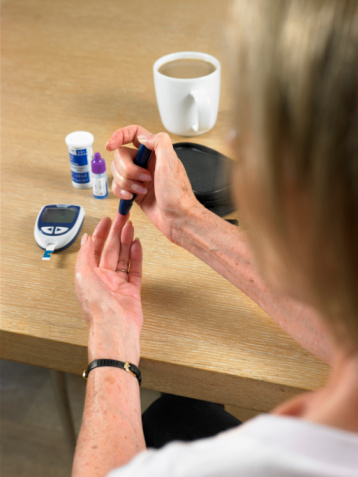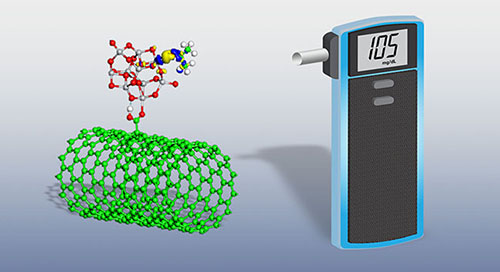The Future of Checking Your Blood Glucose
Why It Might Not Involve A Needle
 Managing your diabetes is hard work. Something that many people do not like doing is checking their blood glucose. The reason is simple—you have to prick your finger with a needle, often many times each day. Is there a better, easier way?
Managing your diabetes is hard work. Something that many people do not like doing is checking their blood glucose. The reason is simple—you have to prick your finger with a needle, often many times each day. Is there a better, easier way?
For now, unfortunately, the answer is “no,” but don’t give up hope, because scientists are working a new method for checking your blood glucose that does not involve a needle.
This new method, which is currently being developed, would allow you to check your glucose simply by blowing into a machine that you can hold in your hand. This machine is called a “breathalyzer.” You may have heard of this kind of device, as many police departments use a breathalyzer to check the blood alcohol level of drivers. It works the same way, but it checks for something different.
How Does This Machine Work?
When you check your blood glucose using a drop of blood from your fingertip, your current testing machine directly measures the amount of glucose in your blood. The breath-testing machine works a little differently. It measures the amount of a chemical called “acetone” in the air you exhale.
What is Acetone?
Acetone is produced when the body breaks down fats. This is normal, and it happens in people with diabetes and people who don’t have diabetes. The difference between you and someone who doesn’t have diabetes is the amount of acetone that is produced.
The normal fuel for most parts of your body is glucose. However, there are some cells in the body that prefer using fat as a primary source of energy. This is because it is a more steady, constant source of energy than glucose. If the cells that want glucose can’t get it, they will use fats instead. When the fats are used by these cells to make energy, acetone is also produced as a “waste-product.” This is like when you make a fire—you get heat, which is what you want, but you are left with ashes, which are the waste-products.
What Does Acetone Have to Do with My Diabetes?
All people (those with and without diabetes) are always breaking down a little bit of fat, so they all have a little bit of acetone in their blood. Your diabetes makes things a little different, and here’s how.
Glucose is transported around the body in the blood, but to get inside the cells (where it can be used), it needs insulin. Remember, having diabetes means you don’t have enough insulin, or the insulin you do have doesn’t work as well. If the glucose can’t get inside the cells, they need to figure out another way to get energy. This is where fats come in.
Cells don’t need insulin to get energy from fat. So if there isn’t enough glucose inside the cells (because it’s all “stuck” in the blood) the cells will use more fat, and more acetone will be made. All this extra acetone winds up in the blood, and one of the ways the body gets rid of it is in the air you exhale—and this is how this new machine works!
That’s a lot of steps, so you can think of it this way:
- You don’t have enough insulin because of your diabetes
- Without enough insulin, glucose can’t get into cells
- Since it can’t get into cells, it stays in the blood—this is why you have high blood glucose.
- Instead of using glucose, your cells use fat for energy
- The higher your blood glucose, the more fat you use
- As more fat is used, more acetone is produced
- The breathalyzer measures the amount of acetone you breathe out

Image courtesy of: http://www.netl.doe.gov/
That Sounds Great! When Can I Buy One?
Unfortunately, it may still be a few years before you can buy one of these amazing machines at your local pharmacy. Researchers are still investigating issues surrounding the sensitivity of the sensors they use and the cost to produce these specialized acetone sensors.
The other problem that scientists are still working on is figuring out how to accurately match-up the amount of acetone in your breath with the exact level of glucose in your blood.
At this point, prototypess of this new machine have finished testing in a laboratory, and testing on real people has just started. For now, you’ll have to keep checking your glucose with a drop of blood, but keep your eyes peeled for this awesome new product in the next year or so.
References:

